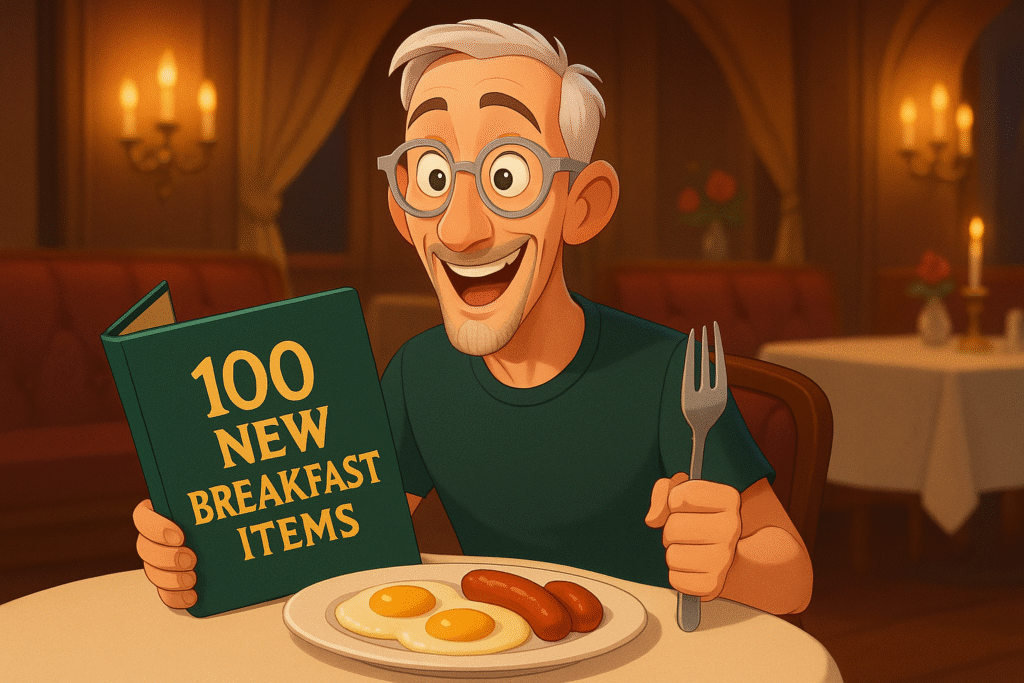
My family teases me mercilessly about my restaurant ordering patterns.
“Dad, you know there are other things on the menu besides the pad see ew, right?”
“Are you physically capable of ordering something besides the eggs and sausage for breakfast?”
I usually shrug it off with a simple “Hey, I’m a creature of habit.” But there’s something much more interesting happening in my brain — and probably in yours too.
Here’s the paradox: I LOVE discovering new foods.
I’ll happily try bizarre local specialties when traveling. (I’ve had the guinea pig and smoked eel, munched the grubs and crickets.)
I enjoy food articles and get sucked into cooking shows almost as quickly as my kids do.
Yet put me in my favorite restaurant, and I transform into a culinary conservative, ordering the same dish I’ve had dozens of times before.
But this isn’t mere habit.
It’s a deep cognitive bias called the ambiguity effect.
In 1961, economist Daniel Ellsberg demonstrated this phenomenon in a now-legendary experiment.
He presented subjects with two urns.
Urn A contained 50 red balls and 50 black balls.
Urn B contained 100 balls that were some unknown mix of red and black.
Participants could bet on drawing a red ball from either urn. The rational choice, mathematically speaking, would be indifference between the urns — the probability is equivalent.
Yet they pretty much always chose Urn A, where the odds were known.
They preferred a known probability over an unknown one, even when the unknown option could potentially be better, but the known one would DEFINITELY not.
This explains my restaurant behavior to a T.
The pad see ew is my Urn A — a known entity with a reliable payoff.
I can (and DO) look forward to what I’ll get.
The untried special:
That’s Urn B — potentially amazing, potentially disappointing, but self-defeatingly unknown.
In I Need That, I talk about how product decisions are corralled by these cognitive biases. Successful products reduce ambiguity, creating clear, predictable outcomes that customers can count on.
Product Payoff: By fighting the ambiguity effect, Netflix’s recommendation algorithm generates 80% of viewers’ ultimate choices. Through highlighting similarity to shows you already enjoy (“Because you watched…”), they transform unknown content into known quantities, removing the psychological barrier to trying new shows.
Netflix’s “match percentage” feature further reduces ambiguity, effectively turning every potential selection into an “Urn A” choice.
It knows what you like, so why waste time on anything else?
Action for today: Identify where ambiguity creates friction in your product experience. When do customers hesitate because outcomes feel uncertain? Create “ambiguity bridges” that connect unknown options to known experiences.
This might be comparison features, risk-free trials, similarity indicators, or customer testimonials that specifically address fears about the unknown.
The goal is of course not to eliminate new choices, but to make them feel less ambiguous. Think like Costco.
Do you have a “pad see ew” equivalent in your life — something you choose repeatedly despite having other options?
Poke that reply arrow and tell me about your own ambiguity aversion.
Or reach out to my team of product marketing strategists at Graphos Product.
